|
Civil War Battles Fought in North Carolina
North Carolina Civil War History and Battlefields
North Carolina Civil War Battles
American Civil War Battlefields of North Carolina
| Map of North Carolina Civil War Battles |
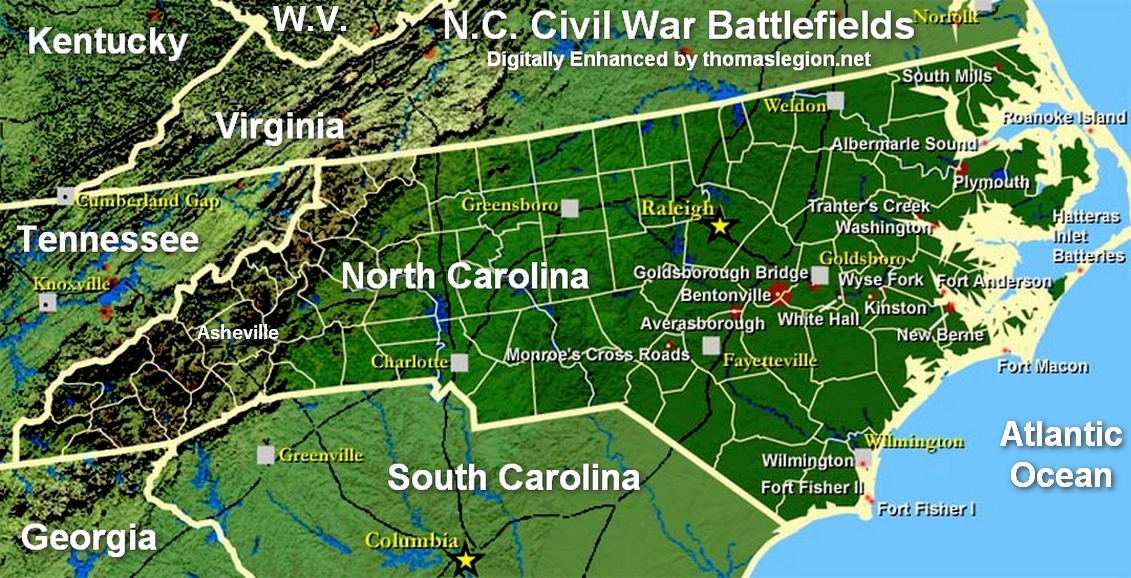
|
| North Carolina Civil War Battlefields Map |
| North Carolina Outer Banks: Civil War Map |
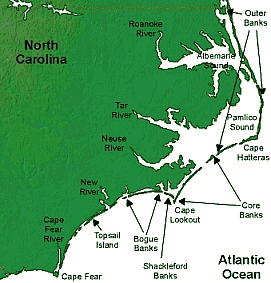
|
| (North Carolina Coast and the Civil War) |
Hatteras Inlet Batteries (A) (also known as Forts Clark and Hatteras; and Hatteras Campaign)
Date: August 28–29,
1861
Location: Dare County
Principal commanders: US: Major General Benjamin F. Butler; CS: Colonel William F. Martin
Estimated
casualties: 773 (US 3; CS 770)
Outcome: Union victory
| North Carolina Outer Banks Defense System |
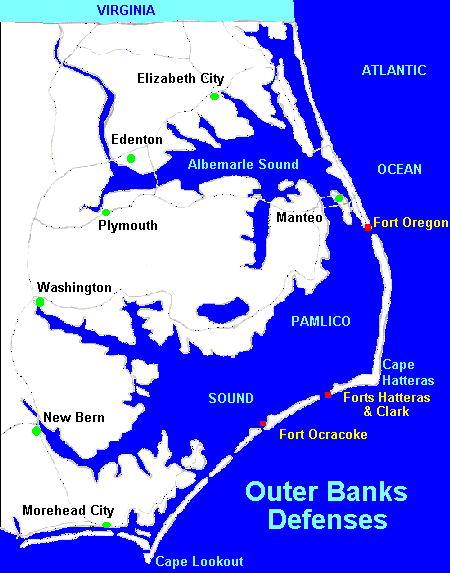
|
| (Civil War North Carolina Coast Map) |
Roanoke Island (B) (also known as Fort Huger)
Date: February 7–8, 1862
Location: Dare County
Principal
commanders: US: Brigadier General Ambrose E. Burnside; CS: Brigadier General Henry Wise
Estimated casualties: 10,500 (US
7,500; CS 3,000)
Outcome: Union victory
Elizabeth City (B)
Date: February
10, 1862
Location: Pasquotank River (near Elizabeth City)
Principal commanders:
US: Commander Stephen C. Rowan; CS: Flag Officer William F. Lynch
Estimated casualties:
55
Outcome: Union
victory
New Bern (B) (also known as New Berne)
Date: March 14, 1862
Location: Craven County
Principal commanders:
US: Brigadier General Ambrose E. Burnside; CS: Brigadier General Lawrence O'B. Branch
Estimated casualties: 1,080
Outcome:
Union victory
Fort Macon (B)
Date: March 23–April 26, 1862
Location: Carteret County
Principal commanders: US: Brigadier
General John G. Parke; CS: Lieutenant Colonel Moses J. White
Estimated casualties: 490 (US 10; CS 480)
Outcome: Union
victory
| Cape Fear Civil War Defenses Map |
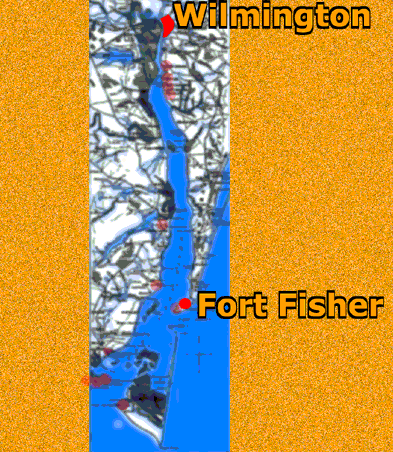
|
| (North Carolina Civil War Forts) |
South Mills (B) (also known as Camden)
Date: April 19, 1862
Location: Camden County
Principal commanders:
US: Brigadier General Jesse Lee Reno; CS: Colonel Ambrose Wright
Estimated casualties: 150
Outcome: Inconclusive (Union
forces withdrew)
Tranter's Creek (B)
Date: June 5, 1862
Location: Pitt County
Principal commanders: US: Lieutenant Colonel F. A.
Osborne; CS: Colonel George Singeltary
Estimated casualties: 40
Outcome: Union victory
Kinston (C) (also known as First Kinston)
Date: December 14, 1862
Location: Lenoir County
Principal commanders:
US: Brigadier General John G. Foster; CS: Brigadier General Nathan Evans
Estimated casualties: 685
Outcome: Union victory
White Hall (C) (also known as White Hall Ferry)
Date: December 16, 1862
Location: Wayne County
Principal
commanders: US: Brigadier General John G. Foster; CS: Brigadier General Beverly Robertson
Estimated casualties: 150
Outcome:
Inconclusive
| North Carolina Civil War Harbor Defenses |
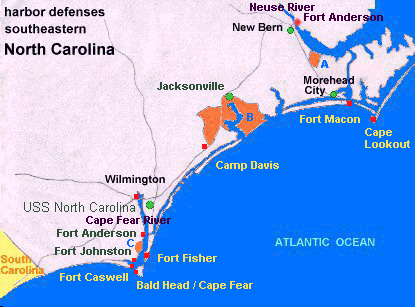
|
| (North Carolina Civil War Harbor Defenses Map) |
Goldsboro Bridge (C) (also known as Goldsborough)
Date: December 17, 1862
Location: Wayne County
Principal
commanders: US: Brigadier General John G. Foster; CS: Brigadier General Thomas ClingmanEstimated casualties: 220
Outcome: Union victory
Fort Anderson (D) (also known as Deep Gully)
Date: March 13–15, 1863
Location: Craven County
Principal
commanders: US: Lieutenant Colonel Hiram Anderson; CS: Major General D. H. Hill
Estimated casualties: 7
Outcome: Union
victory
Washington (D)
Date: March 30–April 20, 1863
Location: Beaufort County
Principal commanders: US: Brigadier
General John G. Foster; CS: Major General D. H. Hill
Estimated casualties: 100
Outcome: Inconclusive (Confederate forces
withdrew)
| Fort Fisher, North Carolina |
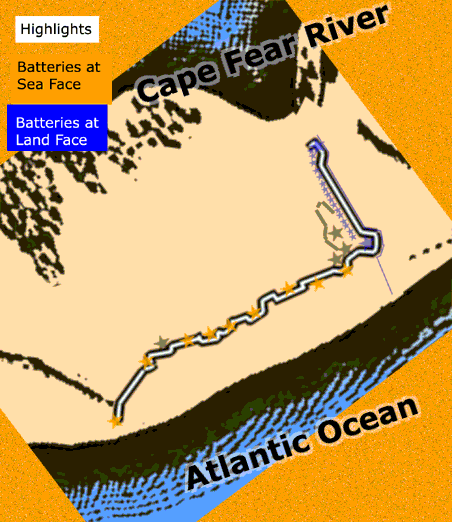
|
| (North Carolina Civil War Batteries and Forts) |
Plymouth (E)
Date: April 17–20, 1864
Location: Washington County
Principal commanders: US:
Colonel Henry W. Wessells; CS: Major General R. F. Hoke
Estimated casualties: 2,834
Outcome: Confederate victory
Albemarle Sound (E)
Date: May 5, 1864
Location: Chowan and Washington Counties
Principal commanders: US: Captain
Melancton Smith; CS: Commander J. W. Cooke
Estimated casualties: 88
Outcome: Inconclusive
Fort Fisher (F) (also known as First Fort Fisher)
Date: December 7–27, 1864
Location: New Hanover
County
Principal commanders: US: Rear Admiral David D. Porter and Major General Benjamin Butler; CS: Major General Robert
Hoke
Estimated casualties: 320
Outcome: Confederate victory
Fort Fisher (G) (also known as Second Fort Fisher)Date: January 13–15,
1865
Location: New Hanover County
Principal commanders: US: Rear Admiral David D. Porter and Major General Alfred Terry;
CS: General Braxton Bragg, Major General Robert Hoke, and Colonel Charles Lamb
Estimated casualties: 2,000
Outcome:
Union victory
| Sherman's March: Campaign of the Carolinas |
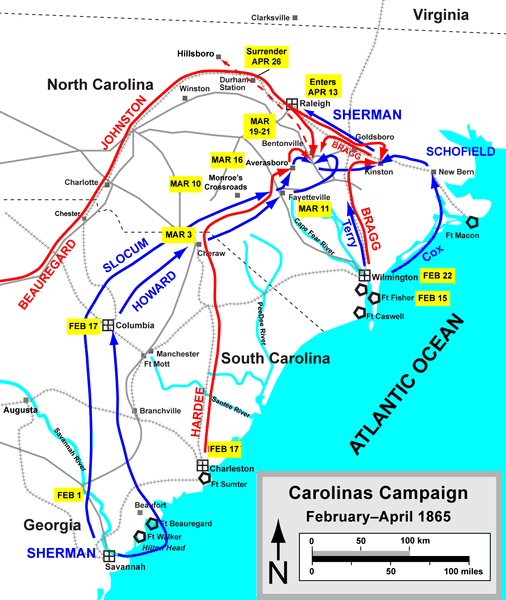
|
| (North Carolina Civil War Battles) |
Wilmington (G) (also known as Fort Anderson, Town Creek, Forks Road, and Sugar Loaf Hill)
Date: February 12–22, 1865
Location: New Hanover County
Principal
commanders: US: Major General John Schofield; CS: General Braxton Bragg
Estimated casualties: 1,150
Outcome: Union victory
Wyse Fork (H) (also known as Wilcox's Bridge, Wise's Fork, Second Kinston, Second Southwest Creek, and Kelly's Mill
Pond)
Date: March 7–10, 1865
Location: Lenoir County
Principal commanders: US: Major General John Schofield;
CS: General Braxton Bragg
Estimated casualties: 2,601 (US 1,101; CS 1,500)
Outcome: Union victory
Monroe's Crossroads (H) (also known as Fayetteville Road and Blue's Farm)
Date: March 10, 1865
Location: Hoke County
Principal
commanders: US: Brigadier General Judson Kilpatrick; CS: Major General Joseph Wheeler and Lieutenant General Wade Hampton
Estimated
casualties: 269 (US 183; CS 86)
Outcome: Inconclusive
Averasborough (H) (also known as Averasboro, Taylor's Hole Creek, Smithville, Smith's Ferry, and Black River)
Date:
March 16, 1865
Location: Harnett and Cumberland Counties
Principal commanders: US: Major General Henry Slocum; CS: Lieutenant
General William Hardee
Estimated casualties: 1,419
Outcome: Inconclusive
| North Carolina Civil War Map |
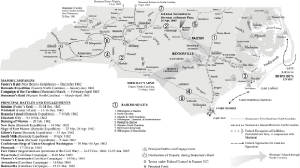
|
| (North Carolina Civil War Battlefields) |
| North Carolina Civil War Battlefields |

|
| (North Carolina Civil War Battles) |
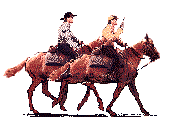
*From
its eastern coast to its western mountains, the Old North State experienced numerous skirmishes, actions or battles. While Asheville, Deep Creek (Bryson City),
Waynesville and Swannanoa Gap were contested ground, Union General George Stoneman, during Stoneman's Raid, unleashed a series of fierce cavalry raids through the Tar Heel State's western communities during the spring of 1865.
Recommended Reading: The Civil War in North Carolina.
Description: Numerous battles and skirmishes were fought in North Carolina during the Civil War, and the campaigns and battles themselves were crucial
in the grand strategy of the conflict and involved some of the most famous generals of the war. Continued below...
John Barrett presents the complete story of military engagements and battles across the state, including
the classical pitched battle of Bentonville--involving Generals Joe Johnston and William
Sherman--the siege of Fort Fisher, the amphibious campaigns on the
coast, and cavalry sweeps such as General George Stoneman's Raid. "Includes cavalry battles, Union Navy
operations, Confederate Navy expeditions, Naval bombardments, the land battles... [A]n indispensable edition." Also
available in hardcover: The Civil War in North Carolina.
Recommended Reading: Confederate Military History Of North Carolina: North Carolina In
The Civil War, 1861-1865. Description: The author, Prof. D. H. Hill, Jr.,
was the son of Lieutenant General Daniel Harvey Hill (North Carolina
produced only two lieutenant generals and it was the second highest rank in the army) and his mother was General “Stonewall”
Jackson’s wife's sister. In Confederate Military History Of North Carolina,
Hill discusses North Carolina’s massive task of preparing and mobilizing for the conflict; the many regiments and battalions
recruited from the Old North State; as well as the state's numerous contributions during the war. Continued below...
During Hill's Tar Heel State
study, the reader begins with interesting and thought-provoking statistical data regarding the 125,000 "Old North State"
soldiers that fought during the course of the war and the 40,000 that perished. Hill advances with the
Fighting Tar Heels to the first battle at Bethel, through numerous bloody campaigns
and battles--including North Carolina’s contributions at the "High Watermark" at Gettysburg--and concludes with Lee's surrender at Appomattox.
Highly recommended!
Recommended Reading: The Flags of
Civil War North Carolina. Description: Compiled and
written by educator and Civil War expert Glenn Dedmondt, The Flags Of Civil War North Carolina
is a very straightforward reference presenting photographs, color illustrations, descriptions and history of the titular flags
that flew over North Carolina when it seceded from the Union.
Each page or two-page spread features the different flags of the various North Carolina
regiments. A meticulously detailed resource offering very specific information for history and civil war buffs, The Flags
Of Civil War North Carolina is a welcome contribution to the growing library of Civil War Studies and could well serve as
a template for similar volumes for the other Confederate as well as Union states. Great photos and illustrations! Continued
below...
Flags stir powerful emotions, and few
objects evoke such a sense of duty and love for the homeland. In April 1861, the first flag of a new republic flew over North Carolina.
The state had just seceded from the union, and its citizens would soon have to fight for their homes, their families, and
their way of life. Each flag is meticulously
detailed and scaled to perfection. The Flags of Civil War North Carolina
is the history of this short-lived republic (which later joined the Confederacy), told through the banners that flew over
its government, cavalry, and navy. From the hand-painted flag of the Guilford Greys to the flag of the Buncombe
Riflemen--made from the dresses of the ladies of Asheville--this
collection is an exceptional tribute to the valiant men who bore these banners and to their ill-fated crusade for independence.
About the Author: Glenn Dedmondt, a lifelong resident of the Carolinas and member of the Sons of
Confederate Veterans, shares his passion for the past as a teacher of South Carolina
history. Dedmondt has also been published in Confederate Veteran magazine.
Recommended
Reading:
The Civil War in the Carolinas (Hardcover).
Description: Dan Morrill relates the experience of
two quite different states bound together in the defense of the Confederacy, using letters, diaries, memoirs, and reports.
He shows how the innovative operations of the Union army and navy along the coast and in
the bays and rivers of the Carolinas affected the general course of the war as well as the
daily lives of all Carolinians. He demonstrates the "total war" for North Carolina's
vital coastal railroads and ports. In the latter part of the war, he describes how Sherman's operation cut out the heart of the last stronghold of the South. Continued below...
The author
offers fascinating sketches of major and minor personalities, including the new president and state governors, Generals Lee,
Beauregard, Pickett, Sherman, D.H. Hill, and Joseph E. Johnston. Rebels and abolitionists, pacifists and unionists, slaves
and freed men and women, all influential, all placed in their context with clear-eyed precision. If he were wielding a needle
instead of a pen, his tapestry would offer us a complete picture of a people at war. Midwest Book Review: The Civil War in the Carolinas by civil war expert and historian
Dan Morrill (History Department, University of North Carolina at Charlotte, and Director of the Charlotte-Mecklenburg Historical
Society) is a dramatically presented and extensively researched survey and analysis of the impact the American Civil War had
upon the states of North Carolina and South Carolina, and the people who called these states their home. A meticulous, scholarly,
and thoroughly engaging examination of the details of history and the sweeping change that the war wrought for everyone, The
Civil War In The Carolinas is a welcome and informative addition to American Civil War Studies reference collections.
Recommended
Reading: Touring
the Carolina's Civil War Sites (Touring the Backroads Series).
Description: Touring the Carolina's Civil War
Sites helps travelers find the Carolinas' famous Civil War battlefields, forts, and memorials,
as well as the lesser skirmish sites, homes, and towns that also played a significant role in the war. The book's 19 tours,
which cover the 'entire Carolinas,' combine riveting history with clear, concise directions and maps, creating a book that
is as fascinating to the armchair reader as it is to the person interested in heritage travel. Below are some examples from
this outstanding book:
1. Fort Fisher - the largest sea fort in the war that protected the
vital town of Wilmington N.C., and the blockade runners so important for supplying Lee's Army of Northern Virginia.
2. Charleston
- where the whole shootin' match started.
3. Bentonville - the last large scale battle of the war.
4. Outer Banks - early Union victories here were vital to capturing many parts of Eastern North Carolina from which the
Union could launch several offensives.
5. Sherman's
March - the destruction of certain towns in both Carolinas (particularly South Carolina)
further weakened the South's will to continue the struggle.
I also enjoyed reading about the locations of various gravesites
of Confederate generals and their Civil War service. Indeed, if not for this book, this native North Carolinian and long-time
Civil War buff may never have learned of, and visited, the locations of some of the lesser-known sites other than those mentioned
above.
Johnson's writing style is smooth--without being overly simplistic--and contains several anecdotes (some humorous
ones too) of the interesting events which took place during the Civil War years. Highly recommended!
Sources: Walter Clark, Histories of the Several Regiments and Battalions
From North Carolina in the Great War 1861-1865 (5 Volumes); D. H. Hill,
Confederate Military History Of North Carolina: North Carolina In The Civil War, 1861-1865; Weymouth T. Jordan and Louis H.
Manarin, North Carolina Troops, 1861-1865; Rod Gragg, Confederate
Goliath: The Battle of Fort Fisher (1991); William R. Trotter, Ironclads and Columbiads: The Civil War in North Carolina,
Vol. III, The Coast (1989); John G. Barrett, The Civil War in North Carolina (1963); Ezra J. Warner, Generals in Gray: Lives
of the Confederate Commanders (1959); Chris Fonvielle, Jr., The Wilmington Campaign: Last Rays of Departing Hope (1997); Chris
Fonvielle, Jr., Fort Anderson: Battle for Wilmington (1999); Mark A. Moore, The Wilmington Campaign and the Battles for Fort
Fisher (1999); John B. Barrett, The Civil War in North Carolina (1963); John Stephen Carbone, The Civil War in Coastal North
Carolina (2001); Lorenzo Traver, Burnside Expedition in North Carolina: Battles of Roanoke Island and Elizabeth City (1880);
Richard Allen Sauers, The Burnside Expedition in North Carolina (1996); North Carolina Office of Archives and History; North Carolina Department of Cultural Resources; North Carolina Museum
of History; State Library of North Carolina; North Carolina Department of Agriculture; University Library, The University
of North Carolina at Chapel Hill; National Park Service: American Civil War; National Park Service: Soldiers and Sailors System;
Library of Congress; National Archives and Records Administration; United States Department of Veterans Affairs; Library
of Congress: American War Casualty Lists and Statistics; William F. Fox, Regimental Losses in the American Civil War; Confederate Military History, Extended Edition (19 Volumes); The Union Army (9 Volumes); North Carolina Troops
1861-1865: A Roster (15 Volumes) [commonly referred to as NC Troops: A Roster]; Official Records of the Union and Confederate
Armies; Official Records of the Union and Confederate Navies; The North Carolina Civil War Trails: A Battlefield Guide and
Maps.

|

